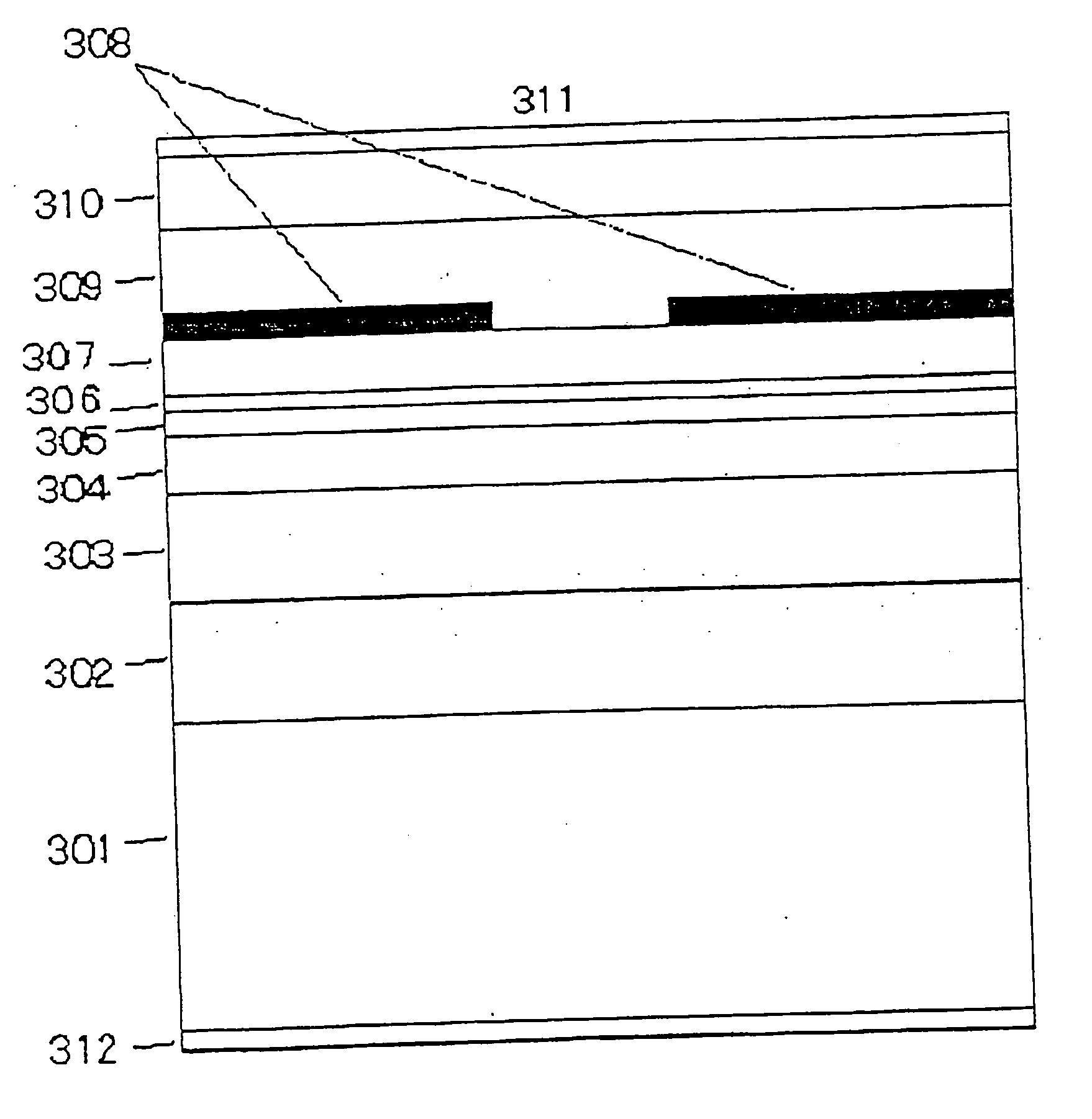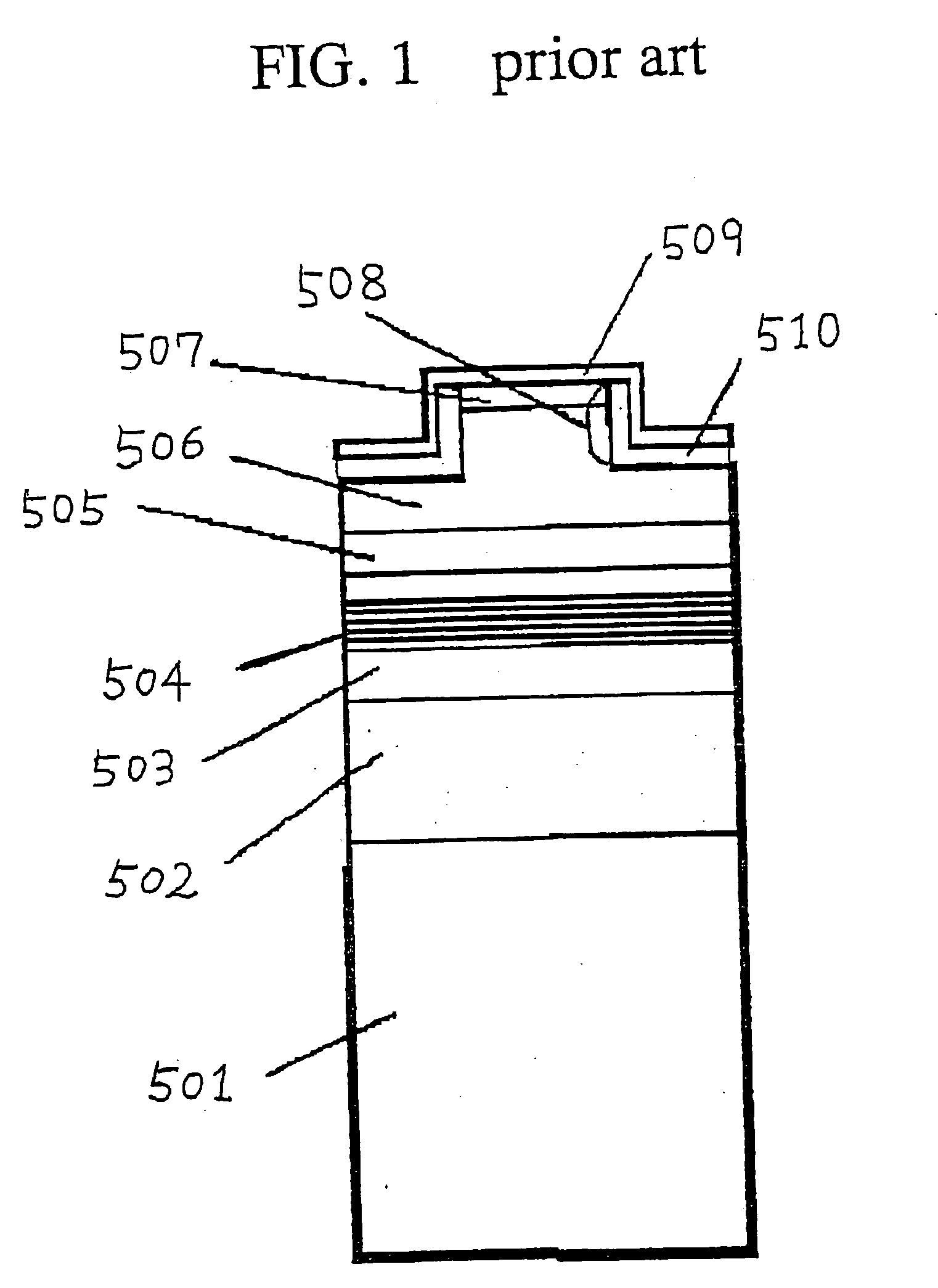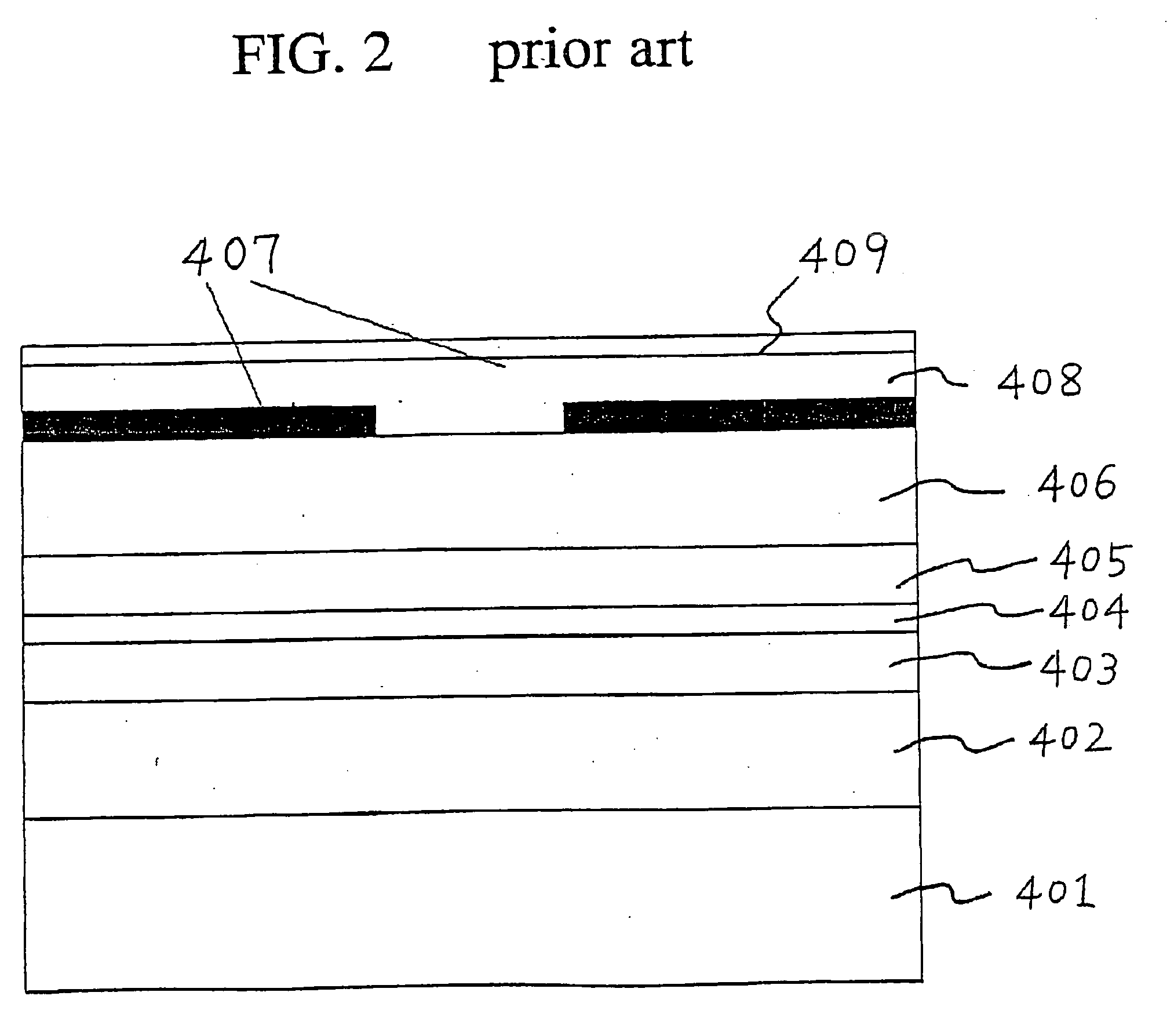Group-III nitride semiconductor device
a technology of nitride and semiconductors, applied in the field of groupiii nitride semiconductor layers and groupiii nitride semiconductor devices, can solve the problems of nitride semiconductors, damage to the active layer of the device, and difficulty in realizing a high yield of the device over a large area, so as to reduce the leakage of current, and reduce the density of dislocations.
- Summary
- Abstract
- Description
- Claims
- Application Information
AI Technical Summary
Benefits of technology
Problems solved by technology
Method used
Image
Examples
example 1
[0139] The following example 1 is involved in the above-described embodiment shown in FIG. 3. An n-type GaN layer with a (0001)-plane and a thickness of 250 micrometers was grown over a sapphire substrate by use of a facet-initiated epitaxial lateral overgrowth method which is disclosed by A. Usui et al. in Japan of Journal Applied Physics 36 (1997) L899. After the growth of the n-type GaN layer, the substrate was then subjected to a cooling process in which the n-type GaN layer was peeled from the sapphire substrate due to a significant difference in thermal expansion coefficient between GaN crystal and sapphire crystal, whereby the substrate was a free-standing GaN substrate with a thickness of 200 micrometers.
[0140] For forming a device structure, a low pressure metal organic vapor phase epitaxy system was used for epitaxial growth under a low pressure of 300 hPa. A mixture gas of hydrogen and nitrogen was used as a carrier gas. A trimethyl gallium gas (TMG), a trimethyl aluminu...
example 2
[0170] The “multi-layered structure growth processes” were carried out in the same manners as in Example 1 to form the lamination structure of the above n-type GaN buffer layer, the above n-type AlGaN cladding layer, the above n-type GaN guide layer, and the above InGaN multiple quantum well active layer, the above p-type GaN guide layer and the amorphous AlN layer for a current confinement layer. The growth of the amorphous AlN layer was carried out at the substrate temperature of 400° C. The wafer was then loaded into a normal pressure anneal reactor, and 1 SLM of oxygen and 4 SLM of nitrogen were supplied for causing a surface oxidation of the wafer at 400° C. for 20 minutes.
[0171] Subsequently, the “stripe-shaped opening formation process” was then carried out in the same manner as in Example 1 for forming the above stripe-shaped opening in the amorphous AlN layer.
[0172] Subsequently, the “multi-layered structure re-growth processes” were then carried out in the same manner as...
example 3
[0196] An amorphous GaN layer was grown on a single crystal GaN layer at a temperature of 350° C. before the amorphous GaN layer was then subjected to a selective wet etching, by use of the single crystal GaN layer as an etching stopper and of a hot etchant of 95° C. which contains phosphate and sulfate at 1:1 ratio. The etching rate was that etching by 0.1 micrometer depth takes a time in the range of 20-40 minutes. The wet etching process was terminated when the surface of the single crystal GaN layer underlying the amorphous GaN layer, whereby a “Sample-D” was obtained.
[0197] Similarly, another amorphous GaN layer was grown on another single crystal GaN layer at a different temperature of 400° C. before the amorphous GaN layer was then subjected to a selective wet etching, by use of the single crystal GaN layer as an etching stopper and of the same hot etchant of 95° C. which contains phosphate and sulfate at 1:1 ratio. The etching rate was that etching by 0.1 micrometer depth t...
PUM
| Property | Measurement | Unit |
|---|---|---|
| dislocation density | aaaaa | aaaaa |
| temperature | aaaaa | aaaaa |
| temperature | aaaaa | aaaaa |
Abstract
Description
Claims
Application Information
 Login to View More
Login to View More - R&D
- Intellectual Property
- Life Sciences
- Materials
- Tech Scout
- Unparalleled Data Quality
- Higher Quality Content
- 60% Fewer Hallucinations
Browse by: Latest US Patents, China's latest patents, Technical Efficacy Thesaurus, Application Domain, Technology Topic, Popular Technical Reports.
© 2025 PatSnap. All rights reserved.Legal|Privacy policy|Modern Slavery Act Transparency Statement|Sitemap|About US| Contact US: help@patsnap.com



